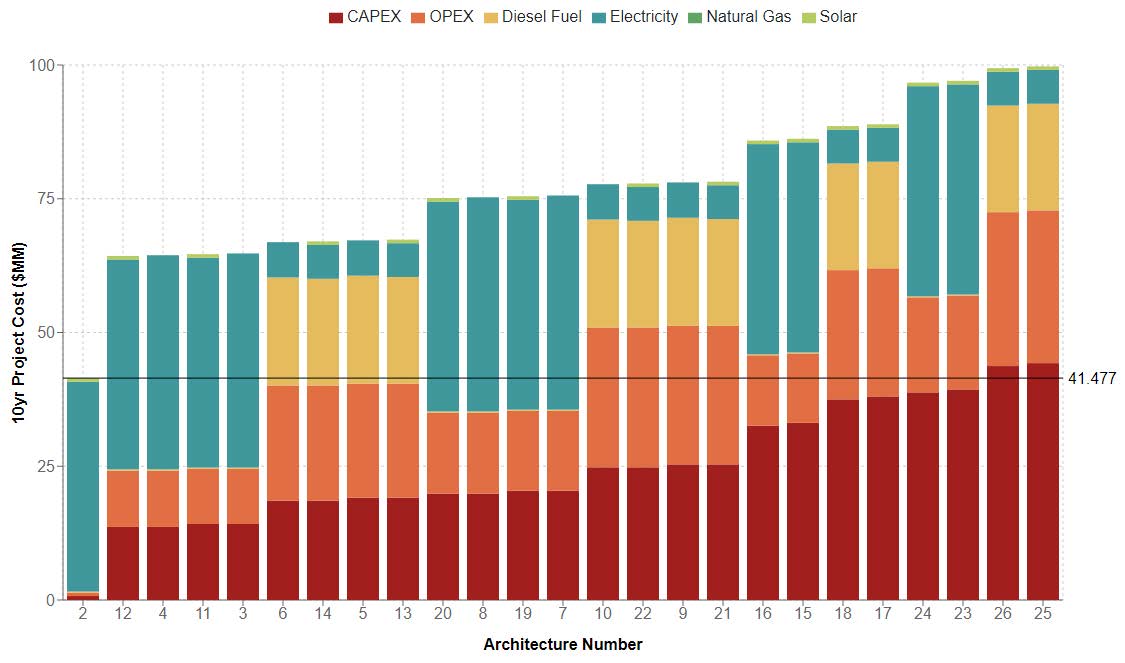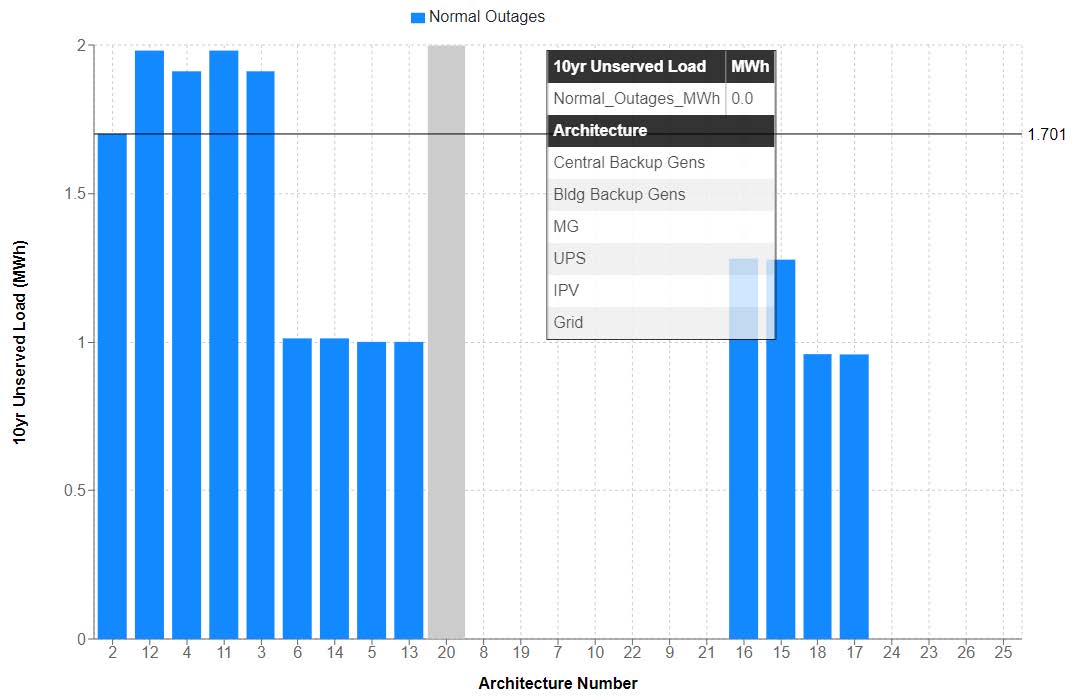New software helps users build resilient, cost-effective energy architectures
A lot of time and work have gone into analyzing how to power military installations in ways that are efficient, affordable, and green, but much less has gone into building resilience into those energy architectures. The benefits of operating within a budget and with a small carbon footprint are substantial, but negated if an energy resilience system cannot withstand local blackouts, weather events, or cyberattacks. Energy resilience is a particularly important issue for installations supporting critical mission and supporting infrastructure, which can include everything from missile defense or medical facilities, to waste-water treatment plants supporting critical missions on military bases. Outages can affect these missions and place lives at risk.

Alexander Pina, a technical staff member in the Energy Systems Group, began work four years ago on a software tool to analyze energy resilience against the cost of possible energy architectures for military installations. The in-house, MATLAB-based software is called the Energy Resilience Analysis tool, or ERA, and its development is funded by the Office of the Secretary of Defense (OSD). The ERA tool aligns to government and DoD standards. It relies on localized data gathered by operational military installations to build assumptions about everything from the frequency of outages on the local grid to the cost of maintaining individual pieces of equipment. These assumptions can be adjusted and catered to reflect installation specific information for a user.
When a user enters the parameters of a specific installation, the program uses a Monte Carlo simulation to run tests of each energy architecture, building a performance and cost model of the most common outcomes. These models reflect the likelihood of the architecture operating as it should, as well as the most common causes of power outages and service interruptions. The program then uses this information to develop a bar graph showing the cumulative expected outage for each architecture. It also builds a second graph that illustrates the cost of each architecture, broken down into the cost of its various energy sources and the price of the system's maintenance. The user is then provided options to determine tradeoffs between resilience and cost that are appropriate to meet an installation’s specific mission requirements.

Nicholas Judson, the assistant leader of the Energy Systems Group and the program lead of the project, emphasized that the ERA tool does not pre-select or bias toward a technology or a best solution. Instead, using installation mission requirements as the basis for inputs, it provides the user multiple technology options to make cost and resilience comparisons. "[The tool is] a technology-agnostic analysis to determine the most cost-effective and reliable way to provide power to critical missions," Judson said. "It's meant to provide a range and overview of various possibilities. The installation can then have a greater sense of confidence and a verified crosscheck when reviewing and pursuing detailed engineering designs and plans from industry partners."
A benefit of the ERA tool is that it analyzes how likely each technology solution is to perform and provide power from a resilience-perspective, and then compares that resilience performance to the life cycle costs of each solution. "It's a way for [users] to say, 'How much is resilience performance going to cost me?'" Pina said. The ERA tool provides installations with analytics and data to support better decision-making, and provides support for energy resilience project development decisions in the early planning stages.
The DoD has begun to deploy the ERA tool for wider Department of Defense (DoD) use, and is establishing partnerships with other Federal Agencies interested in resilience planning. For example, the tool is now required to be used for all energy resilience project proposals submitted to the Energy Resilience and Conservation Investment Program, or ERCIP, which is a military construction program intended to fund projects that improve energy resilience, contribute to mission readiness, save energy, and reduce the DoD's energy costs. A large portion of ERCIP's yearly budget is now allocated to energy resilience. To qualify for ERCIP funding, each Military Department or Defense Agency putting forward an energy resilience proposal must use the tool to demonstrate the project will provide energy resilience in a cost-effective manner.

To transfer the tool fully to the DoD, Pina and his team are working now to move the program from MATLAB to Python, so that every potential user doesn't have to learn the more specialized MATLAB software and programming language. They are expanding the range of inputs the tool can process, adding energy sources like dual fuel generators, wind turbines, and nuclear power. Judson wants to add automated sensitivity analysis, whereby the tool could tell users automatically which inputs are having the greatest effect on the output; this capability is available in the current tool, but the evaluation must be done manually. Pina hopes to expand the tool's capability for scenario planning, i.e. for determining an energy architecture's response to specific events like cyberattacks. Pina also hopes that more complete installation data can be gathered to improve the accuracy of the project-level assumptions made by the tool.
One of the main benefits of the tool is that it gives users at the DoD important information about cost and resilience in a way that can be easily understood and compared. Better information empowers users to make the best available decision for their specific situation. "[This tool is] taking [resilience planning] out of the hands of the vendor and putting it into the hands of the user and operator," Pina said.